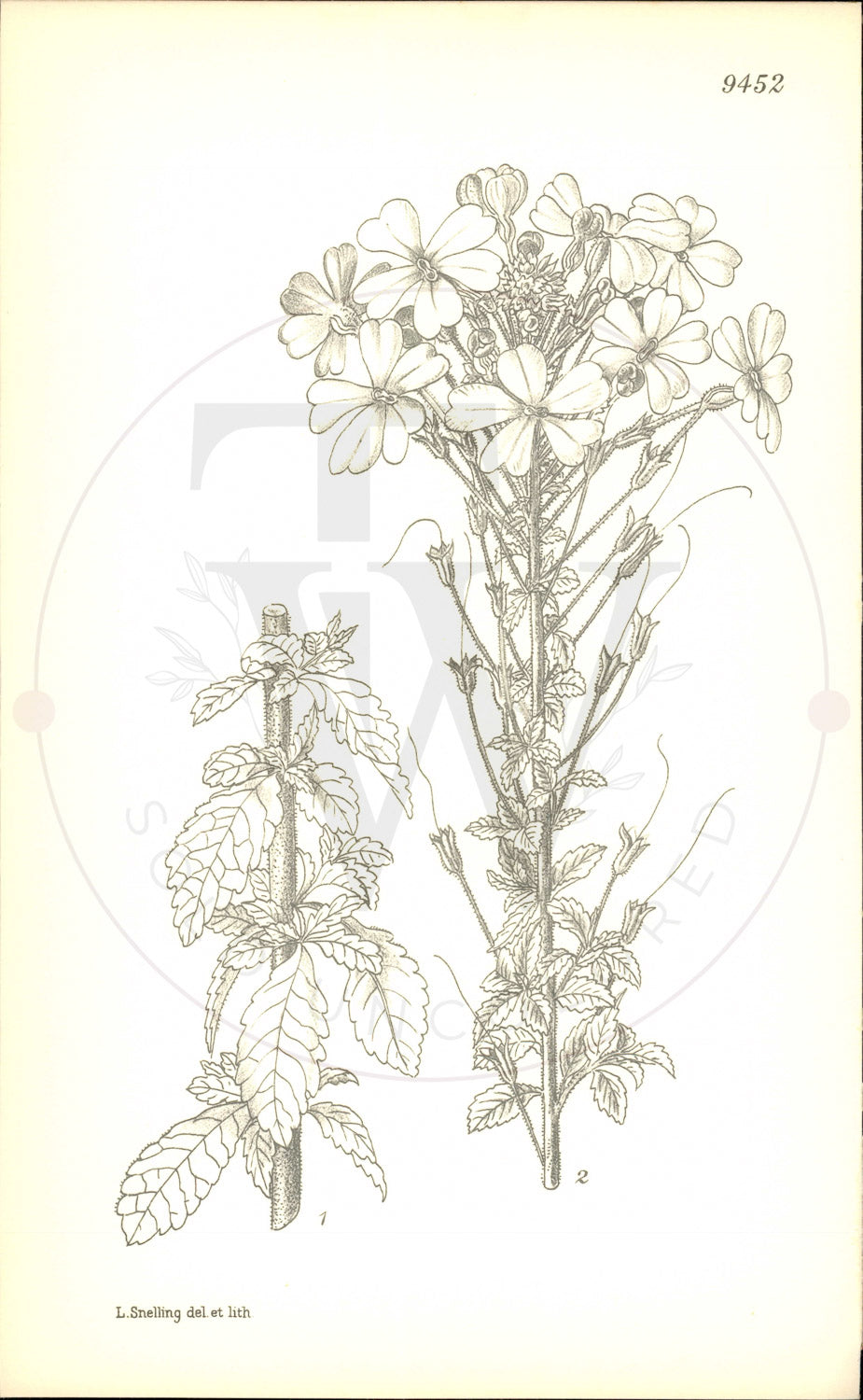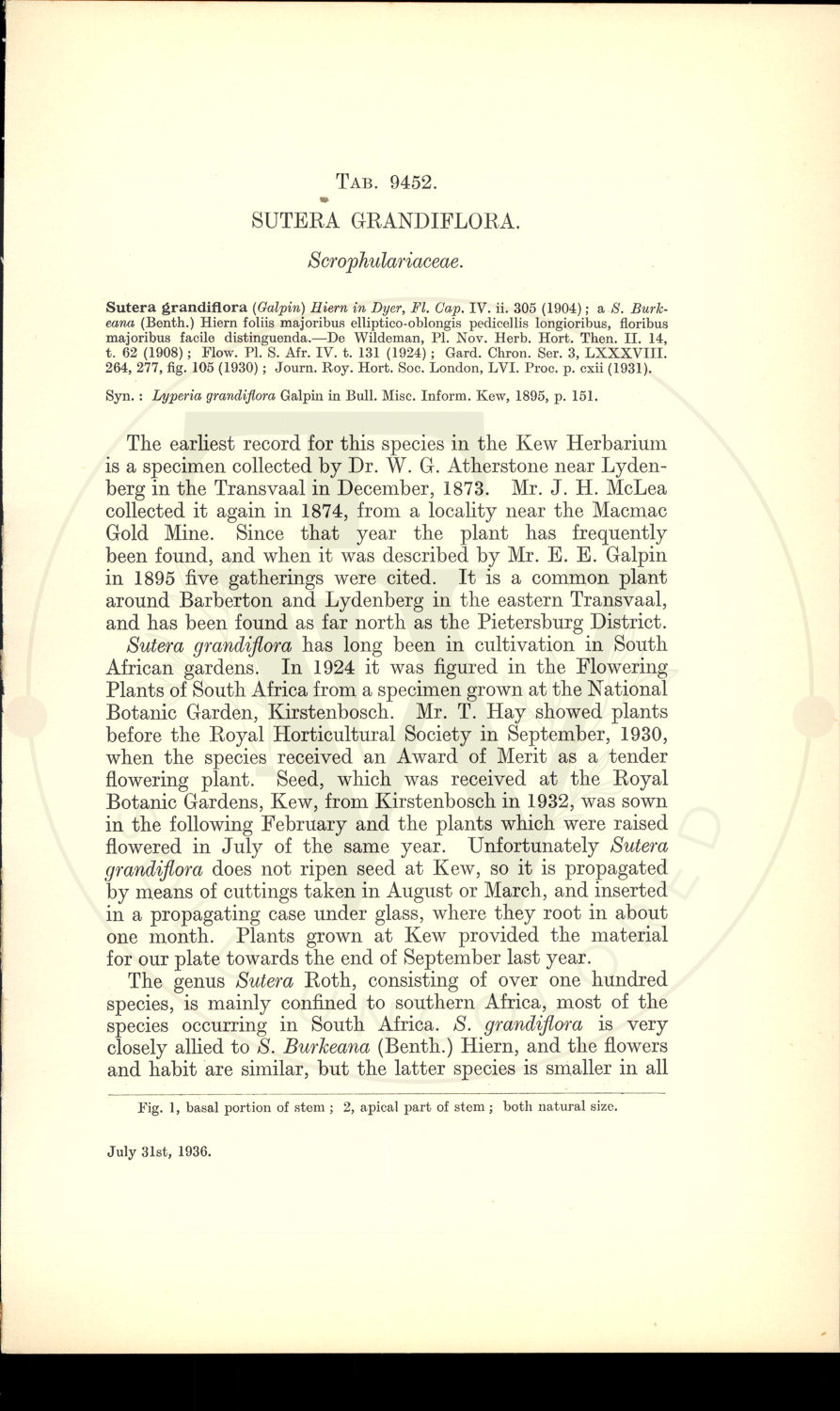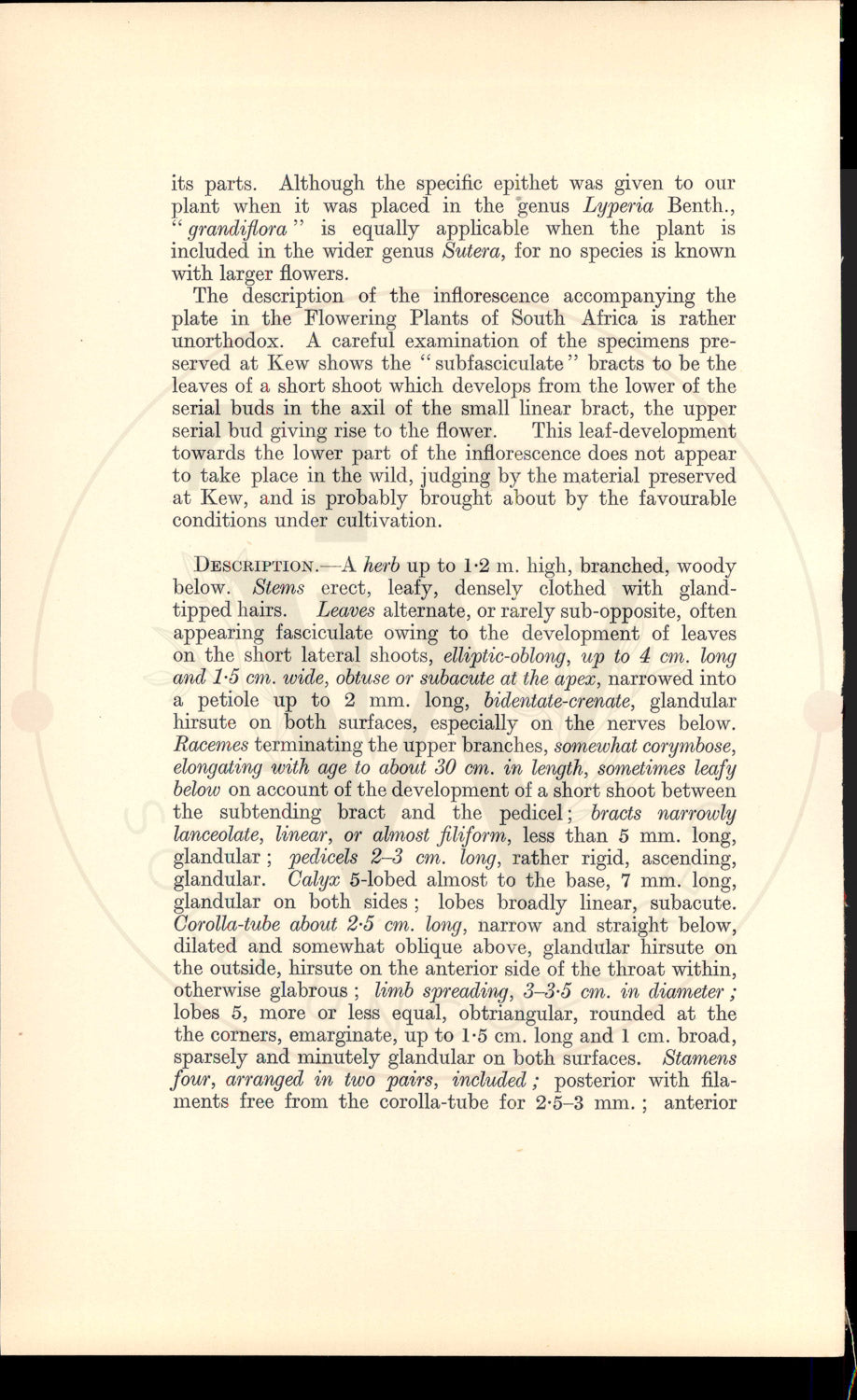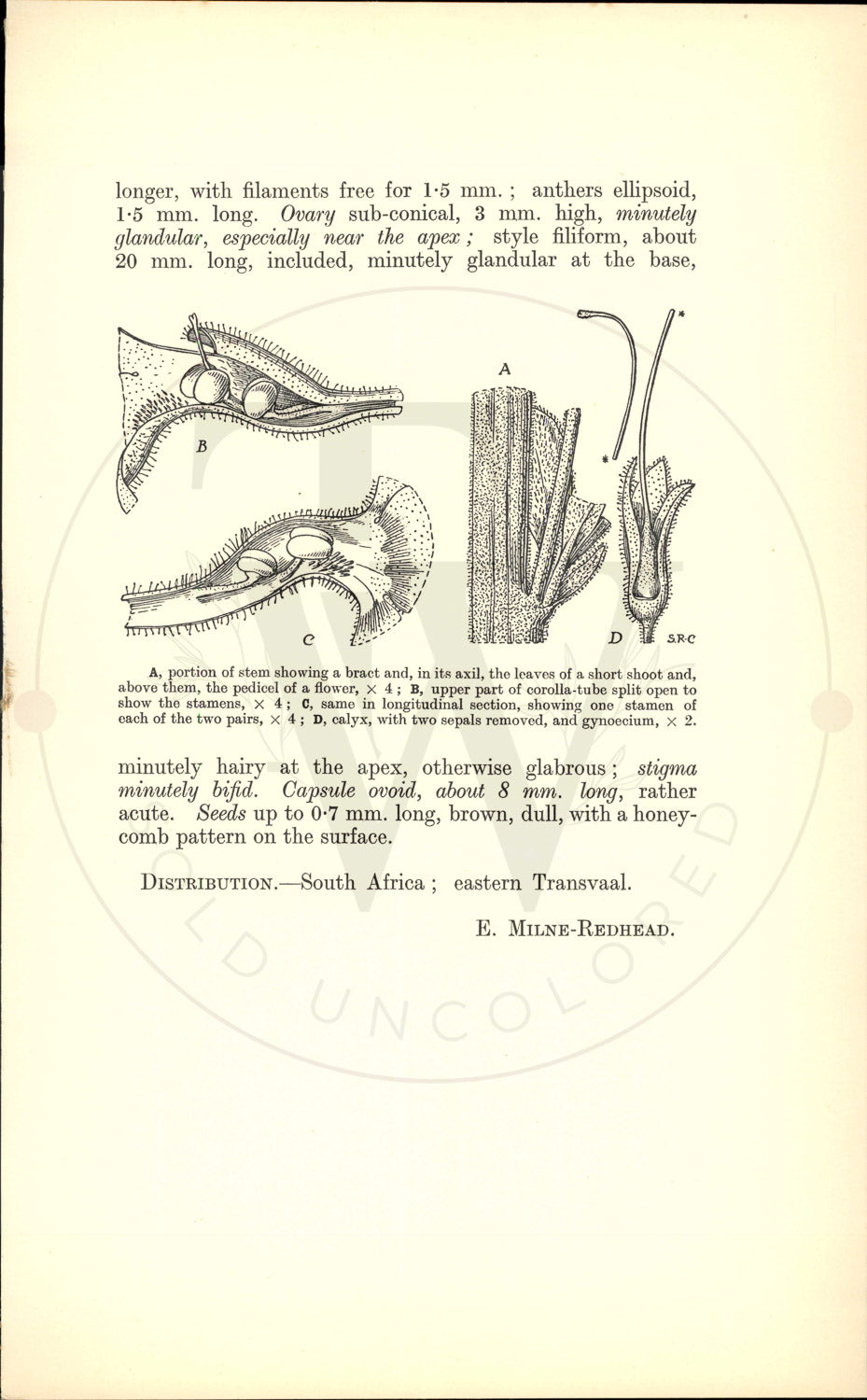Curtis Botanical Magazine
Plate 9452 - Sutera grandiflora
Plate 9452 - Sutera grandiflora
Couldn't load pickup availability
Curtis's Botanical Magazine - Plate 9452
Sutera grandiflora
Native Region: Africa • Publication Date: January 1st, 1934
Distribution: South Africa; eastern Transvaal • Tab Author: E. MILNE-REDHEAD
Botanical Description
Gold Mine. Since that year the plant has frequently been found, and when it was described by Mr. E. E. Galpin in 1895 five gatherings were cited. It is a common plant around Barberton and Lydenberg in the eastern Transvaal, and has been found as far north as the Pietersburg District. Sutera grandiflora has long been in cultivation in South African gardens. In 1924 it was figured in the Flowering Plants of South Africa from a specimen grown at the National Botanic Garden, Kirstenbosch. Mr. T. Hay showed plants before the Royal Horticultural Society in September, 1930, when the species received an Award of Merit as a tender flowering plant. Seed, which was received at the Royal Botanic Gardens, Kew, from Kirstenbosch in 1932, was sown in the following February and the plants which were raised flowered in July of the same year. Unfortunately Sutera grandiflora does not ripen seed at Kew, so it is propagated by means of cuttings taken in August or March, and inserted in a propagating case under glass, where they root in about one month. Plants grown at Kew provided the material for our plate towards the end of September last year. The genus Sutera Roth, consisting of over one hundred species, is mainly confined to southern Africa, most of the species occurring in South Africa. S. grandiflora is very closely allied to S. Burkeana (Benth.) Hiern, and the flowers and habit are similar, but the latter species is smaller in all.
Synonyms
Lyperia grandiflora Galpin in Bull. Misc. Inform. Kew
About This Print
Original black and white uncolored botanical print from Curtis's Botanical Magazine (established 1787). This 9000s series print is from unissued publisher stock, never hand-colored, representing the authentic plate as it appeared in the magazine. Edited by Sir Arthur William Hill for The Royal Horticultural Society, London.
Share









